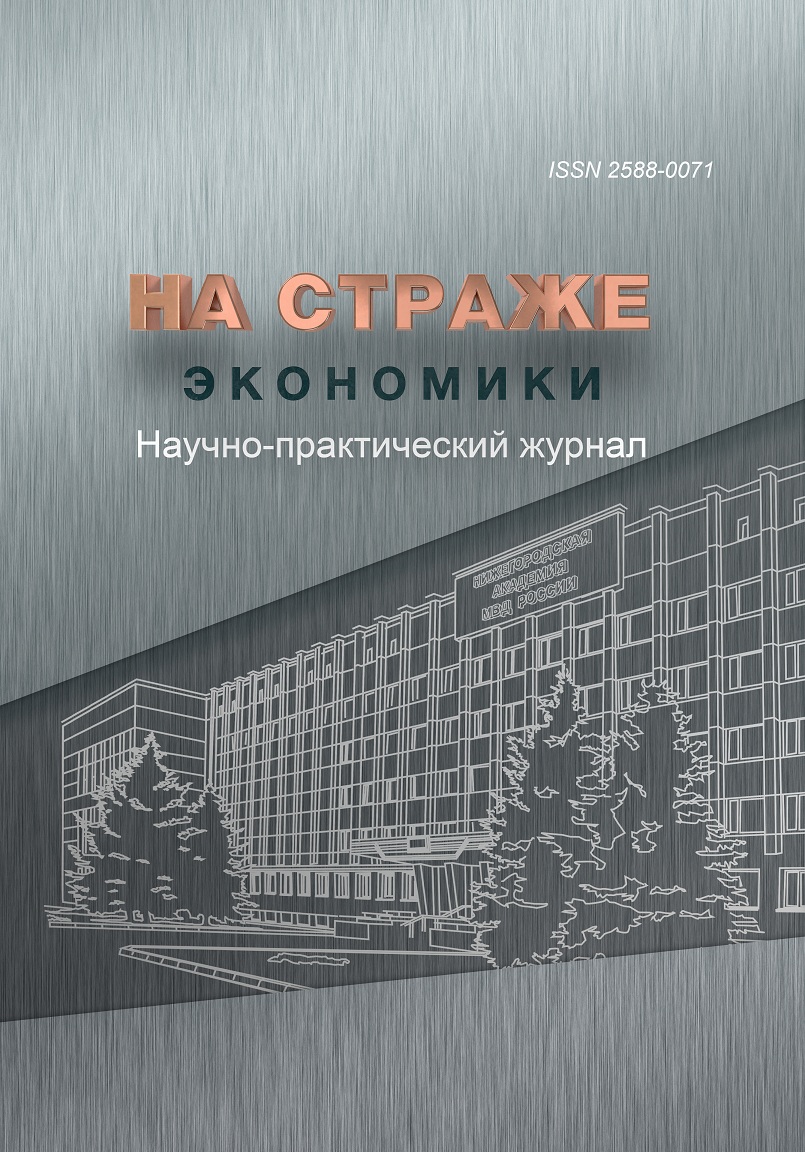from 01.01.1971 to 01.01.2022
from 01.01.2002 until now
Nizhniy Novgorod, Nizhny Novgorod, Russian Federation
The sustainable development of the innovative economy in the regions of the Russian Federation is researched. From this position, the changes in the commissioning of capacities for the protection of water resources and atmospheric air from pollution, as well as the renewal of forests in Russia for the period 2017–2022 are presented. Taking into account the importance of responsible investment, investments in fixed assets aimed at environmental protection and rational use of natural resources of the Russian Federation in 2022 are given. The relevance of the research is due to the progress in the achievements of science and technology, as well as the existing strong competition. This requires the promotion of creative concepts in the management of sustainable socio-economic development of Russia. Such concepts may be based on consideration of ESG criteria: Environment — environment, Social — social development, Governance — corporate governance. In order to reduce the heterogeneity of the socio-ecological development of Russia, the multifactorial task of strategic management on the formation of a methodology based on ESG principles is analyzed. The authors propose a promising and productive method for solving multifactorial problems — neural network cluster analysis using information technology. It allowed us to distribute the regions of the Russian Federation into six cluster formations characterized by different levels of development in the perspective of ESG features according to a set of 11 indicators. The structure of clusters detailing the entry of Russian regions into them is given. The average values of the studied indicators of sustainable innovative development of the regional economy in each of the clusters and in the whole country are shown. It follows from the results of the work that the management’s focus on the synthesis of ESG principles and the productivity of responsible investment will become important components in the formation of strategies for the innovative development of the Russian economy. This will be one of the key factors in strengthening the economic security of the Russian Federation.
Russian regions, sustainable development, ESG principles, responsible investment, economic security, artificial intelligence, cluster analysis, neural networks
1. On the concept of transition of the Russian Federation to sustainable development: decree of the President of the Russian Federation no. 440 of April 1, 1996. URL: http://www.kremlin.ru/acts/bank/9120 (accessed 15.10.2023). (In Russ.)
2. The main provisions of the sustainable development of Russia. URL: https://www.socionauki.ru/almanac/noo21v/number_2/5_4.pdf (accessed 10.15.2023). (In Russ.)
3. On the Strategy of socio-economic development of the Russian Federation with a low level of greenhouse gas emissions until 2050. URL: https://docs.cntd.ru/document/726639341 (accessed 10.15.2023). (In Russ.)
4. Federal State Statistics Service. URL: https://www.gks.ru (accessed 15.10.2023). (In Russ.)
5. Nikitin G. S., Skobelev D. O. Efficiency of state and corporate investments in the development of the real sector of the economy. Bulletin of the Nizhny Novgorod University named after N. I. Lobachevsky. Series: Social Sciences, 2022, no. 4 (68), pp. 32–41. (In Russ.)
6. Zamyatina M. F., Tishkov S. V. ESG factors in the strategies of companies and regions of Russia and their role in regional innovative development. Issues of innovative economy, 2022, vol. 12, no. 1, pp. 501–518. (In Russ.)
7. Brakk D. G., Leshchenko Yu. G. Analysis of the performance indicators of the GAZPROM Group in the context of the impact on the ecological system of the Arctic zone of Russia. Development and security, 2023, no. 1, pp. 59–73. (In Russ.)
8. Chebotarev V. S., Shokh M. A. Competitiveness and economic security of regions. The Economy under Guard, 2022, no. 1 (20), pp. 68–74. (In Russ.)
9. Bogatyrev A. V., Bubnova O. Yu. Experience of factor analysis of innovative activity of the region. The Economy under Guard, 2019, no. 3 (10), pp. 10–15. (In Russ.)
10. Perova V. I., Neznakomtseva O. Yu. Research into the dynamics of social and economic development of the Russian Federation regions. Bulletin of the Nizhny Novgorod University named after N. I. Lobachevsky. Series: Social Sciences, 2016, no. 4 (44), pp. 44–51. (In Russ.)
11. Aleskerov F. T., Gokhberg L. M., Egorova L. G., Myachin A. L., Sagieva G. S. A Method of Static and Dynamic Pattern Analysis of Innovative Development of Russian Regions in the Long Run, in: Springer Proceedings in Mathematics and Statistics. Vol. 104 Models, Algorithms and Technologies for Network Analysis. Dordrecht, L., Cham, Heidelberg, NY: Springer, 2014. Ch. 1. Pp. 1–8. (In Russ.)
12. Kohonen T. Self-Organized Formation of Topologically Correct Feature Maps. Bio1. Cybern. 1982, vol. 43, no. 1, pp. 59–69. (In Russ.)
13. Letiagina E. N., Perova V. I. Neural network modeling of regional innovation ecosystems. Journal of New Economy, 2021, vol. 22, no. 1, pp. 71–89. (In Russ.)














